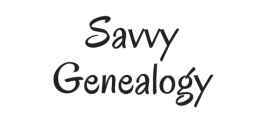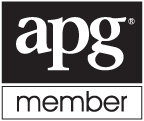2 Things You Should Know about Norwegian Place Names
Hey everyone! How’s it going? Any genealogy stories to share? I’m working on Johanna’s sister’s family and it’s amazing! I’m learning how to use city records and even The Church of Jesus Christ of Latter-day Saint records. I found that this religion had a branch in the city where my family was from. I have yet to find out if they were members of this branch or if they continued to be Lutherans, but that will come. I’m excited to learn more about it!
This post I want to discuss more about how Norwegians used farm/place names in their records. This idea came up in my last post when I was talking about census records and marriage records. I realized that each name had a different place name behind the surname that might need more explaining. For example; Johannes Kolbensen Stolsmark and Johannes Kolbensen Haugeland. Now remember, in Norway people use their farms or places as their address to distinguish themselves from their neighbor with the same name. They usually put their farm name after their surname or in place of their surname if the space is limited.
However, Johannes Kolbensen has two farm names. So which one is right or are they both right? This was especially confusing when I knew the family hadn’t moved from the farm they were on and yet I would see two different farm names.
I went back to FamilySearchWiki.org to learn more. I found during the 1600s and 1700s that Norway had a lot of land for its people. However, over time, the land got smaller and smaller and the people grew more and more. Eventually, it became customary to have one large or main farm with many sub-farms under its jurisdiction. It was similar to share cropping in the U.S. after slavery was abolished. The owner still owned the whole land, but gave a portion to others to work and earn their living.
Johannes Kolbensen was a crofter, which means he was a sharecropper on a main farm. He wasn’t a farmer because he didn’t own the land, but he got a portion of the land to work and earn a living. Therefore, I learned that Stolsmark was the main farm and some of the sub farms were also called Stolsmark or given a different name such as Krogen. The 1891 census used Krogen after Johannes’ name instead of Stolsmark, but he and his family were listed under the Stolsmark main farm. It can be confusing at first because our society is so different. But just remember that by the 1800s, most of the land was divided into main farms with sub farms under them.
2. Parish Farms
Johannes also had Haugeland as a farm name. This was different. It wasn’t a sub farm. Haugeland is a farm in Imsland Parish, which is right next to Vikedal Parish. He was listed with this farm name on his marriage record with his first wife, Lisbet. He actually came from Haugeland farm and married her in Stolsmark farm in Vikedal Parish.
I learned this from going to the FamilySearchWiki page and typing in Haugeland, Norway. It brought up a whole bunch of options that I had to narrow down. So again, I thought about human nature and it made sense that people wouldn’t travel across Norway to get married, but they would travel across parishes to get married. That’s when I found Haugeland, Imsland, Rogaland, Norway. I was then able to continue looking for Johannes and his birth family in that area. I also read on the Wiki page that Imsland and Vikedal used to be one parish. Then these two separated after awhile. So it made sense that people might know each other since these parishes are so close.
That’s basically how farm names are used in Norway. They’re used either as a sub farm of a bigger farm or an actual farm in a different parish. It depends on when that farm name is used in context to the record. Johannes’ first marriage record made sense that he came from a different parish, however; he was still on the same farm on his second marriage record. That led me to think that the different farm names were sub farms because he never geographically moved.
Interesting how records are aren’t they. Well, I hope you have more success in the coming week and I will talk with you people soon.
Good luck and happy hunting!
Tiffany


